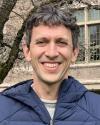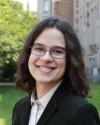
Experimental nuclear and particle physics research seeks to elucidate fundamental properties of elementary particles and search for new fundamental particles or interactions, both by studying high energy collisions and by making precision measurements of low energy nuclear and particle interactions in order to constrain or discover signatures of possible new physics. Major puzzles involve the nature of dark matter, which is only known through its gravitational effects on cosmic structure, the possible existence of very long-lived weakly interacting particles, determining the currently unknown value of neutrino masses and whether antineutrinos are distinct from neutrinos, and more generally identifying signs of new physics not described by the Standard Model.
Research in this area at the UW includes major participation in accelerator-based experiments at the Large Hadron Collider (LHC) in Geneva, such as the ATLAS and FASER collaborations, with a focus on very long-lived particles as well as Higgs and tau physics. UW faculty also play leadership roles in the application of machine learning and AI to particle physics data analysis.
UW also hosts the Center for Experimental Nuclear Physics and Astrophysics (CENPA), whose ongoing efforts include leadership in the Muon g-2 collaboration at FERMILAB, the DAMIC-M dark matter experiment located in the Modane deep underground lab in France, the LEGEND neutrinoless double beta decay experiment in Gran Sasso (Italy), the KATRIN neutrino mass experiment at Karlsruhe (Germany), and the proposed PIONEER rare pion decay experiment at PSI (Switzerland). Locally, the CENPA hosts ADMX, the world-leading axion dark matter experiment, the next-generation neutrino mass experiment Project-8, and a program of precision beta decay measurements using CENPA’s tandem accelerator.
Research Strengths
- Axion dark-matter: ADMX (Rybka)
- Electroweak physics using tau-leptons at the LHC (Buat)
- Higgs physics and BSM searches using the Higgs at the LHC (Goussiou)
- Light dark-matter: DAMIC-M (Chavarria)
- Long-lived particle searches at the LHC: ATLAS, FASER, MATHUSLA (Hsu, Lubatti, Watts)
- Machine learning, AI, and data analysis for particle physics (Hsu, Watts)
- Muon g-2 (Hertzog, Kammel)
- Neutrino mass experiments: KATRIN, Project-8 (Enomoto, Novitski, Robertson)
- Neutrinoless double beta decay: LEGEND, SELENA (Detwiler, Chavarria)
- Precision beta decay: (Garcia)
- Rare pion decays: PIONEER (Hertzog, Kammel, Buat)
Highlighted Resources
- Accelerated AI Algorithms for Data-Driven Discovery (A3D3) - NSF HDR Institute
- ATLAS Experiment at the LHC
- Axion Dark Matter eXperiment (ADMX)
- Center for Experimental Nuclear Physics and Astrophysics (CENPA)
- Dark Matter in CCDs at Modane (DAMIC-M) experiment
- Forward Search Experiment (FASER)
- Institute for Research and Innovation in Software for High Energy Physics (IRIS-HEP) – NSF Software Institute
- KArlsruhe TRItium Neutrino (KATRIN) experiment
- Large Enriched Germanium Experiment for Neutrinoless ββ Decay (LEGEND)
- Massive Timing Hodoscope for Ultra Stable neutraL pArticles (MATHUSLA)
- Muon g-2 experiment
- PIONEER pion decay experiment
- Project-8 neutrino mass experimentI
See also: Astrophysics, Cosmology & Gravitation










